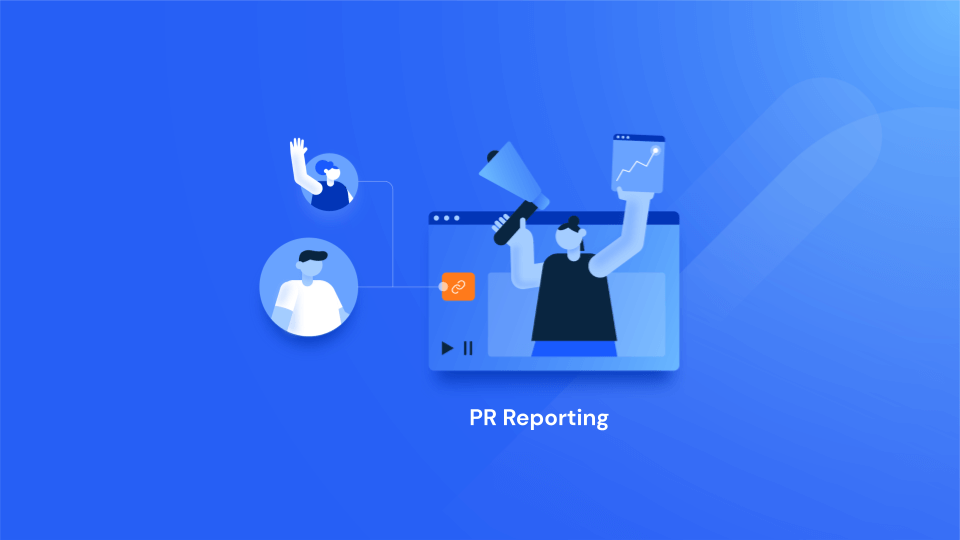In today’s digital age, where businesses constantly strive to maintain a positive public image, the role of public relations (PR) has become more crucial than ever. As companies seek to effectively communicate with their audiences and manage their reputation, the need for comprehensive PR reporting tools has surged. In this article, we delve into the realm of PR reporting tools, exploring their significance, key features, top options in the market, selection criteria, implementation strategies, success stories, and future trends.
Introduction to PR Reporting Tools

1. What are PR reporting tools?
PR reporting tools are software applications designed to assist PR professionals in monitoring, measuring, and analyzing various aspects of their PR activities. These tools enable users to track media coverage, measure campaign performance, monitor social media mentions, and generate insightful reports to assess the effectiveness of their PR efforts.
2. Importance of PR reporting in modern business
In the dynamic landscape of modern business, maintaining a positive public image is paramount. PR reporting tools play a pivotal role in helping businesses understand how their brand is perceived by the public, identify areas for improvement, and measure the impact of their PR campaigns. Also, by providing actionable insights and data-driven analysis, these tools empower PR professionals to make informed decisions and optimize their strategies for maximum impact.
Key Features
When selecting a PR reporting tool for your business, it’s essential to consider several key features to ensure that it meets your specific needs and objectives.
1. Metrics and analytics capabilities
A robust PR reporting tool should offer comprehensive metrics and analytics capabilities, allowing users to track and measure various PR metrics such as media mentions, website traffic, social media engagement, sentiment analysis, and more. Also, these metrics provide valuable insights into the effectiveness of PR campaigns and help in identifying areas for improvement.
2. Customization options
The ability to customize reports according to specific requirements is another important feature to look for in PR reporting tools. Whether it’s tailoring reports to different stakeholders, adding custom data points, or choosing specific metrics to track, customization options ensure that users can generate reports that are tailored to their needs and preferences.
3. Integration with other platforms
An effective PR reporting tool should seamlessly integrate with other platforms and tools that PR professionals commonly use, such as social media management tools, CRM systems, and content management systems. Also, integration capabilities facilitate data sharing and streamline workflows, enabling users to access all relevant data and insights in one centralized platform.
Top PR Reporting Tools in the Market
Several PR reporting tools are available in the market, each offering unique features and capabilities to meet the diverse needs of businesses. Let’s explore some of the top options:
Tool 1: AIM Insights
Features:
- Comprehensive media monitoring
- Real-time analytics dashboard
- Customizable reporting templates
- Integration with social media platforms
Tool 2: Brandwatch
Features:
- Automated media monitoring
- Sentiment analysis
- Competitor benchmarking
- Mobile app for on-the-go access
Tool 3: Meltwater
Features:
- Multi-channel tracking
- Customizable dashboards
- Historical data analysis
- White-label reporting options
How to Choose the Right PR Reporting Tool for Your Business
Selecting the right PR reporting tool for your business requires careful consideration of various factors:
1. Assessing your needs and goals
Begin by identifying your specific PR objectives, such as increasing brand awareness, managing reputation, or driving engagement. Assess the features and functionalities offered by different PR reporting tools to determine which ones align best with your goals.
2. Budget considerations
Evaluate the pricing plans and subscription options of different PR reporting tools to ensure that they fit within your budget constraints. Consider the long-term value and return on investment (ROI) offered by each tool, rather than focusing solely on upfront costs.
3. Trial and testing period
Many PR reporting tools offer free trials or demo versions that allow users to test the platform before making a commitment. Take advantage of these trial periods to explore the features, usability, and performance of each tool and determine which one best meets your needs.
Implementing PR Reporting Tools Effectively
Once you’ve selected a PR reporting tool for your business, it’s essential to implement it effectively to maximize its benefits:
1. Training and onboarding
Provide comprehensive training and onboarding sessions for your PR team to familiarize them with the features and functionalities of the chosen tool. Offer ongoing support and resources to ensure that they can effectively utilize the tool in their daily workflows.
2. Establishing key performance indicators (KPIs)
Define clear and measurable KPIs that align with your PR objectives and use them to track the success of your PR campaigns. Regularly monitor and analyze the relevant metrics provided by the reporting tool to assess performance and identify areas for improvement.
3. Regular monitoring and analysis
Make it a habit to regularly monitor and analyze the data provided by your PR reporting tool to gain valuable insights into the effectiveness of your PR efforts. Use these insights to refine your strategies, optimize your campaigns, and achieve better results over time.
Future Trends
As technology continues to evolve, we can expect to see several exciting trends emerging in the field of PR reporting tools:
1. AI and automation advancements
Advancements in artificial intelligence (AI) and machine learning are revolutionizing PR reporting, enabling more accurate sentiment analysis, predictive analytics, and automated reporting processes. Also, AI-powered tools can analyze vast amounts of data in real-time, providing PR professionals with actionable insights and recommendations to optimize their strategies.
2. Predictive analytics for PR strategies
Predictive analytics algorithms are becoming increasingly sophisticated, allowing PR professionals to forecast trends, anticipate crises, and proactively adjust their strategies accordingly. Also, by leveraging predictive analytics, businesses can stay ahead of the curve and respond effectively to changing market dynamics and consumer behaviors.
Conclusion
In conclusion, PR reporting tools are indispensable assets for modern businesses seeking to enhance their public relations efforts. By providing actionable insights, measuring campaign performance, and facilitating data-driven decision-making, these tools empower PR professionals to effectively manage their brand reputation, engage with stakeholders, and achieve their PR objectives. As technology continues to evolve, businesses must embrace innovative PR reporting tools to stay ahead of the competition and maintain a positive public image.
For those interested in experiencing the power of cutting-edge PR reporting firsthand, we encourage you to request a demo from AIM Technologies. Discover how our advanced features and intuitive interface can revolutionize your PR strategy and propel your business toward success.
FAQs
What is the role of sentiment analysis in PR reporting tools?
- Sentiment analysis helps PR professionals gauge the overall sentiment surrounding their brand or campaign by analyzing the tone and context of media mentions, social media conversations, and customer feedback. This insight enables them to understand how their brand is perceived by the public and tailor their messaging accordingly.
How can PR reporting tools help businesses measure the ROI of their PR efforts?
- PR reporting tools allow businesses to track various metrics such as media mentions, website traffic, social media engagement, and brand sentiment. By correlating these metrics with specific PR activities and campaigns, businesses can assess the impact of their PR efforts on key performance indicators (KPIs) and calculate their return on investment (ROI).
What are some common challenges associated with implementing PR reporting tools?
- Some common challenges include data integration issues, lack of internal expertise, resistance to change, and difficulty in defining measurable KPIs. Overcoming these challenges requires proper planning, training, and collaboration between PR professionals and other stakeholders within the organization.
Are there any regulatory considerations to keep in mind when using PR reporting tools?
- Depending on the industry and geographical location, businesses may need to comply with various regulations regarding data privacy, transparency, and disclosure. It’s essential to ensure that the PR reporting tool you choose adheres to relevant regulatory requirements and guidelines to avoid potential legal issues.
How can businesses stay updated on the latest trends and advancements in PR reporting tools?
- To stay abreast of the latest trends and advancements in PR reporting tools, businesses can attend industry conferences, webinars, and workshops, join professional associations, and engage with thought leaders and experts in the field. Additionally, subscribing to industry publications and newsletters can provide valuable insights and updates on emerging technologies and best practices.




